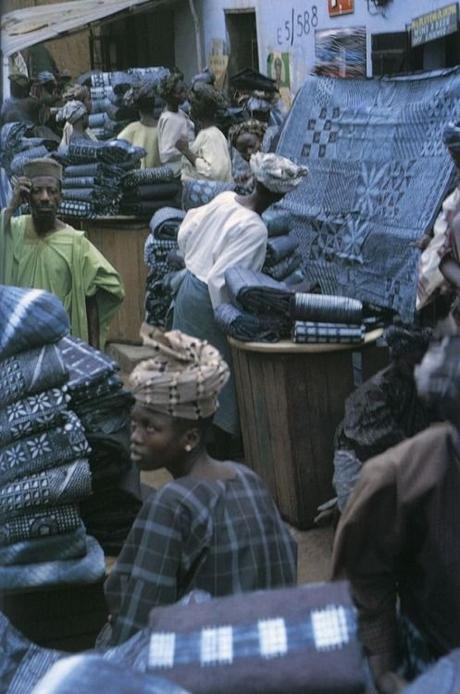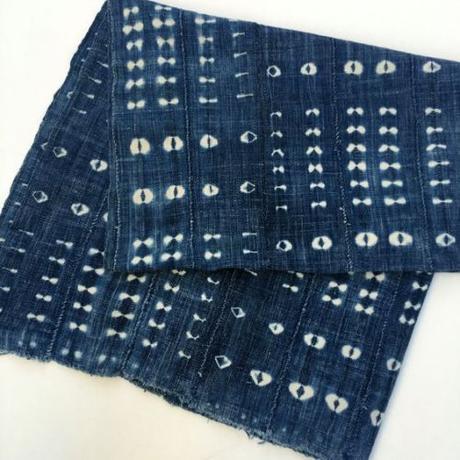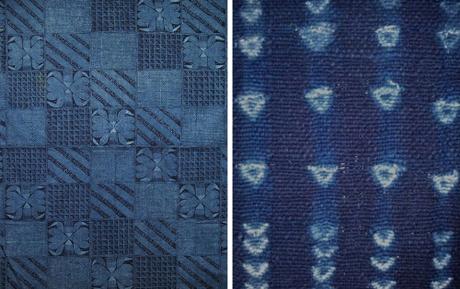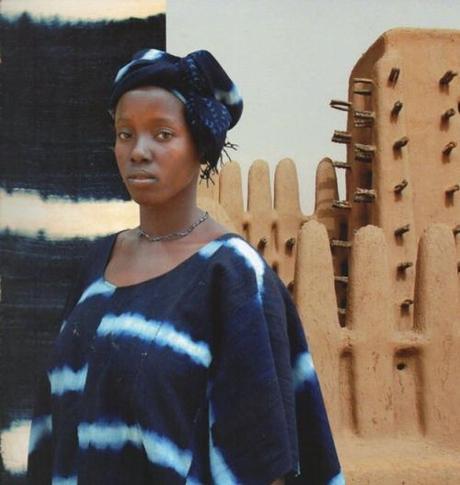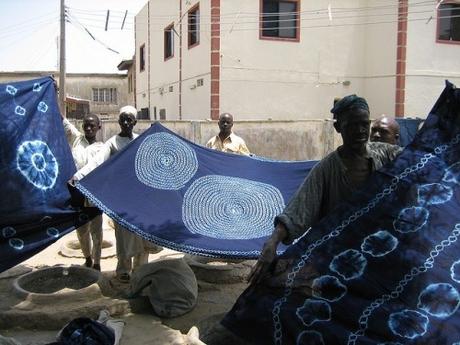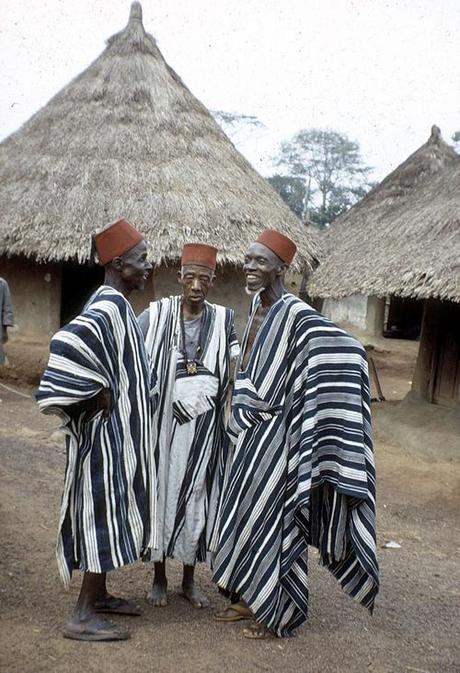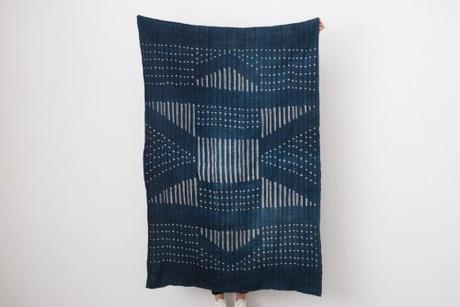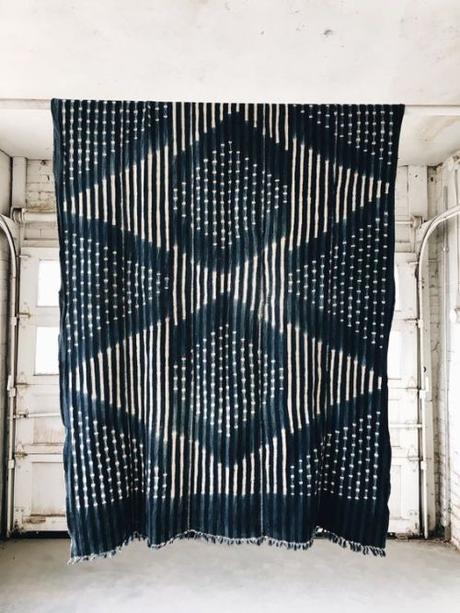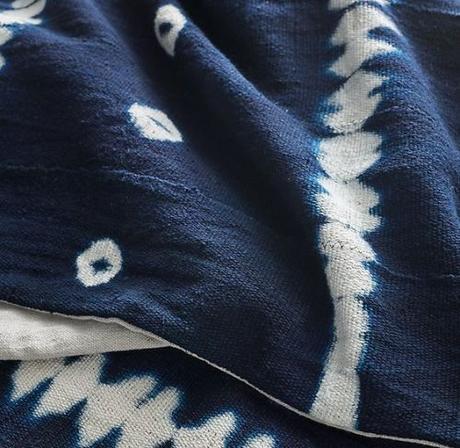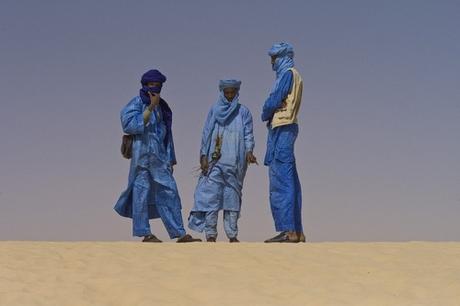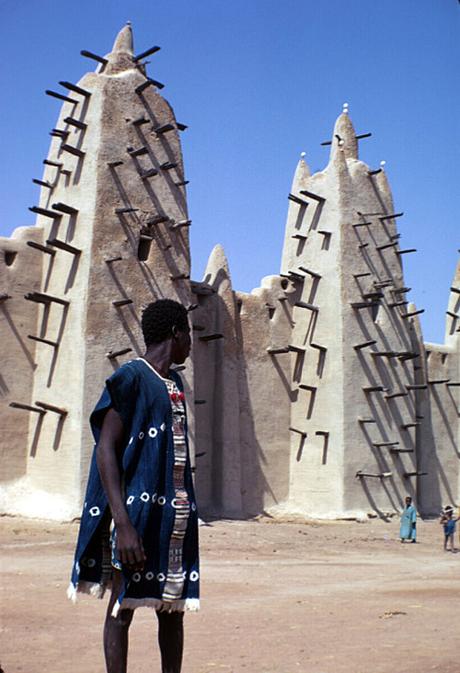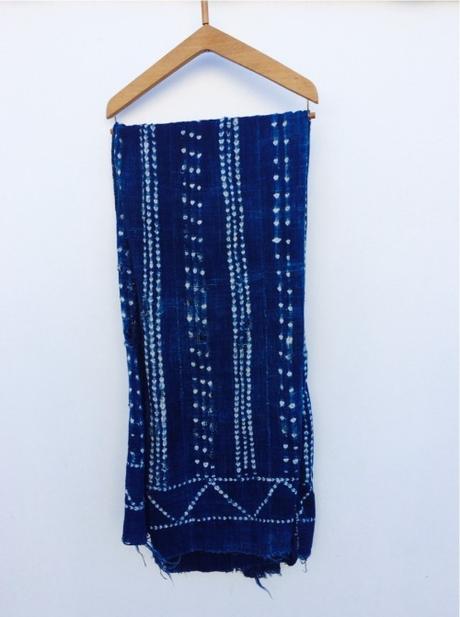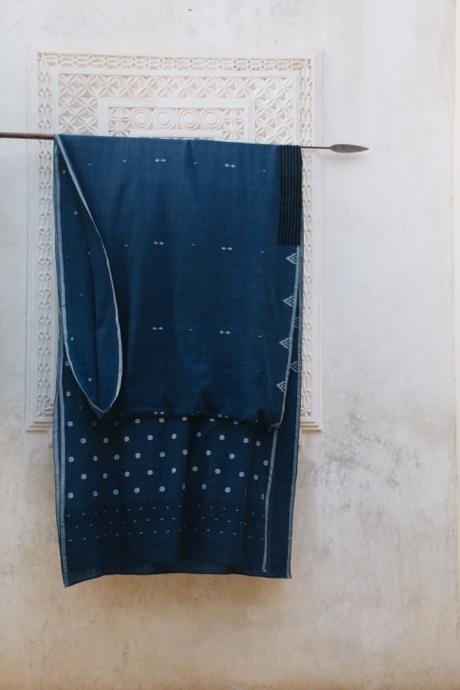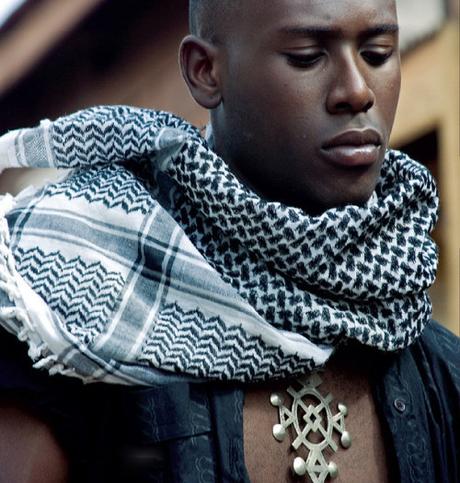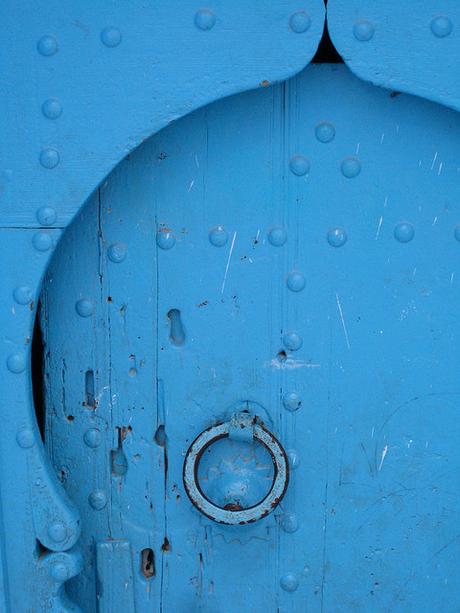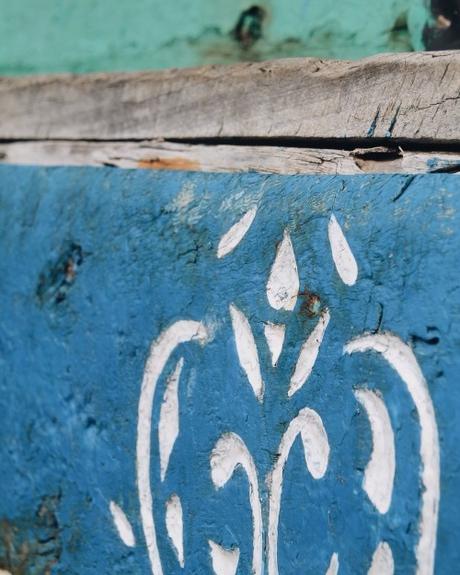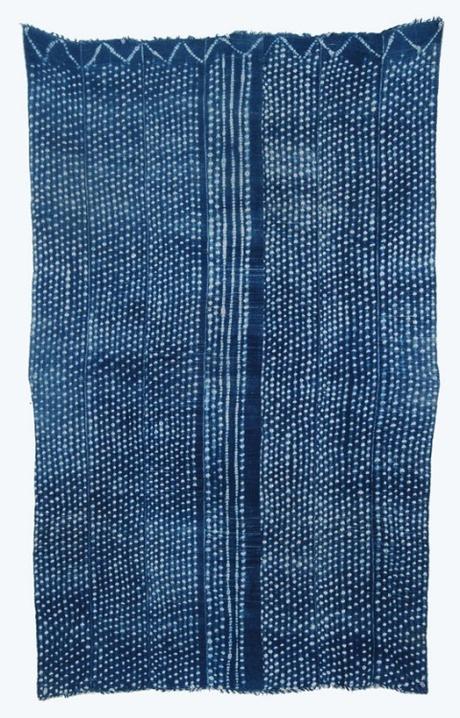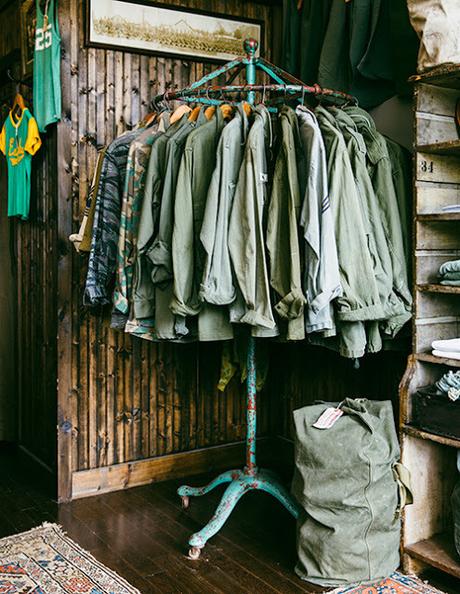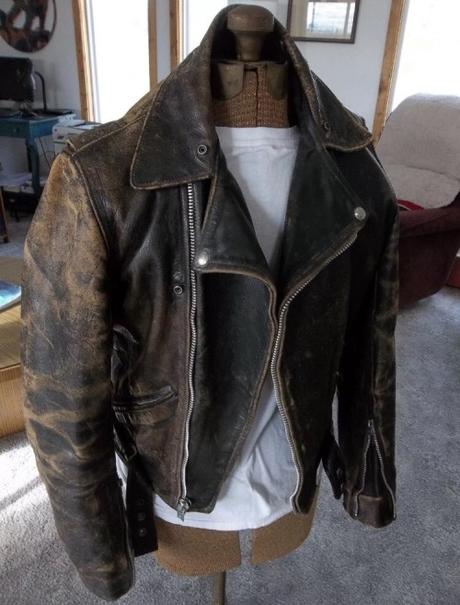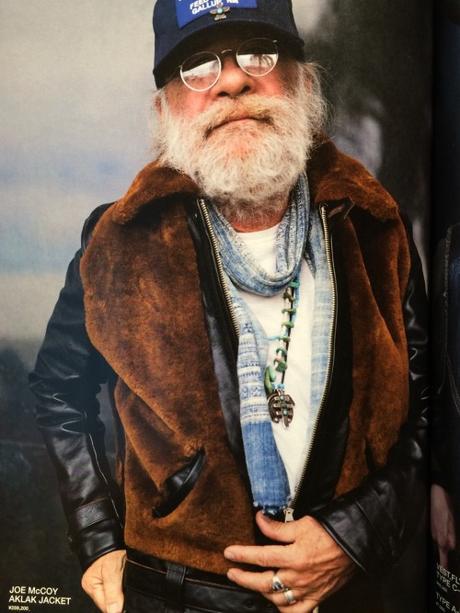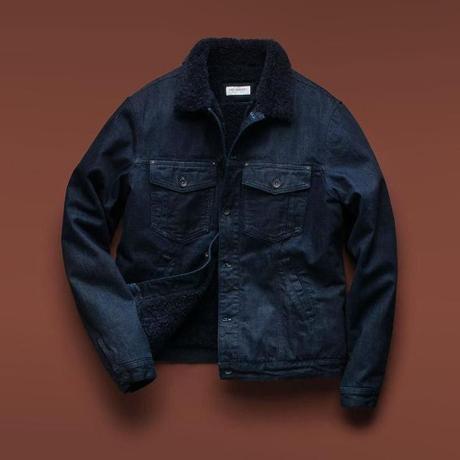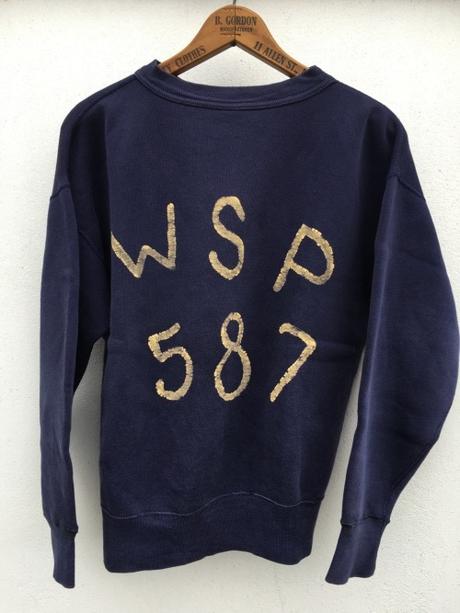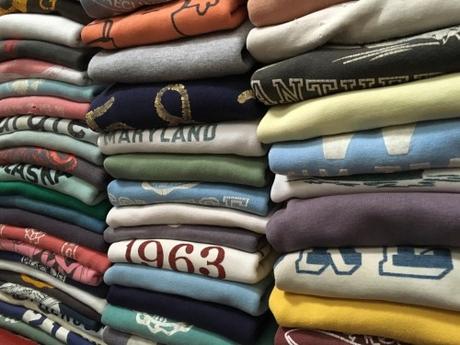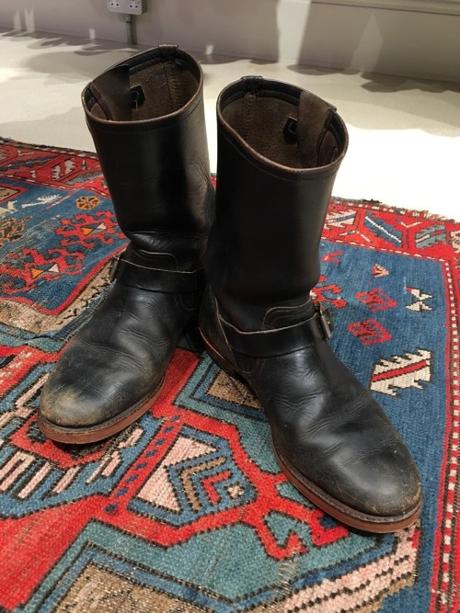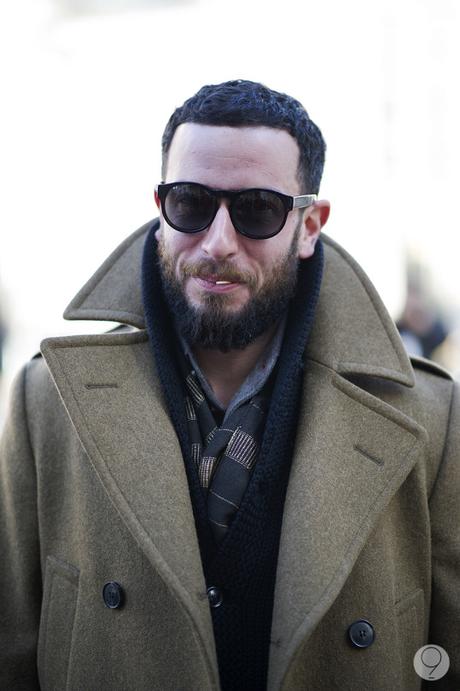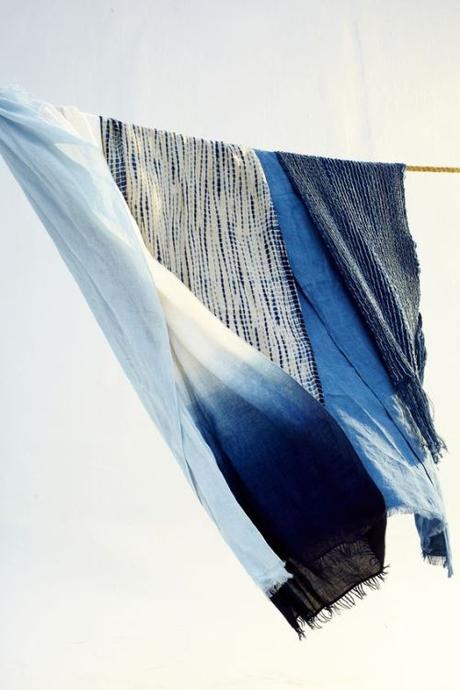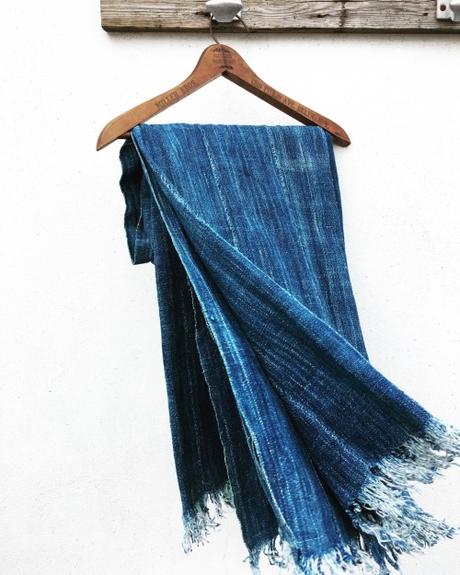
Some fabrics have a distinct national character. Denim is American, just as tweed is British. Indigo, however, is the lingua franca of the textile world – a common language shared by all. Even though many today associate indigo with Japan, people from around the world have been extracting color from the indigofera plant and its related species for hundreds of years.
Some of the richest indigo traditions today are in Africa. The color first came by way of trade with merchants from India and the Middle East, which means many of the older African indigo traditions are based on the continent’s Eastern and Southern coasts. The noted Arab traveler Ibn Battutah once remarked on the indigo-dyeing pits he saw in Kano, an ancient trading city in Nigeria, which he visited in the 1300s. Supposedly some of those pits are still being used today, seven hundred years later.
African indigo-dyed cottons are tremendously beautiful, often incorporating weaving techniques not commonly found elsewhere, but you’re more likely to find them in home furnishings than men’s clothing. If you’ve ever visited an upscale home decor boutique or a flea market, you may have seen them used for bohemian-styled throws or pillows. They’re the sort of things that end up in some East Village home, surrounded by hip bookshelves and even hipper records. The fabrics are naturally dyed, so the colors are bright, and the yarns are typically thick, slubby, and textured – making the cloth feel like a softer version of cotton canvas.
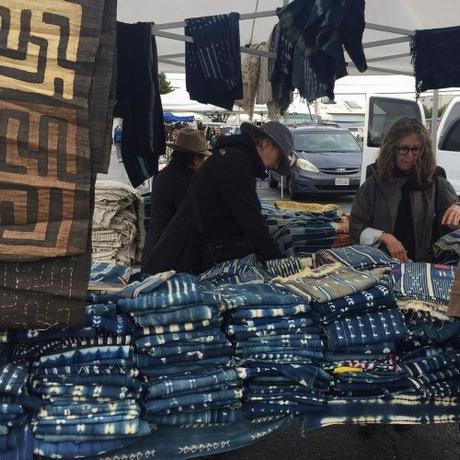
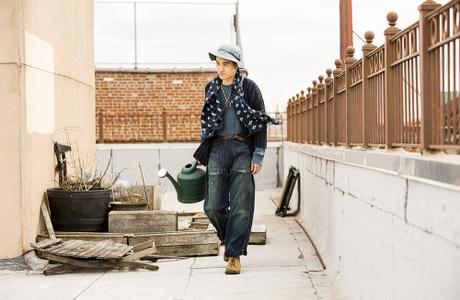
One of the easiest ways you can incorporate the material into an outfit is through scarves. African indigo scarves are too casual for tailored clothing, but they can be great accompaniments to casualwear. Think: faded field jackets, rugged double riders, or heavy Melton wool pea coats. Indigo nicely complements colors such as olive, navy, and black, which take up a good chunk of most men’s casual wardrobes. And while cotton scarves aren’t usually warm enough for winter, these are pretty thick – making them look and feel right for the season.
The only challenge is finding something that works. Again, when searching around, you’ll find dozens of weavings meant to be used as blankets and throws, but few that can be wrapped around your neck. I recommend aiming for something that’s at least 64" long and roughly 20" wide. That’ll give you enough material for a scarf without having it look awkwardly stringy or unmanageably oversized.
You’ll also want to pay attention to the design and weave. Many of these come in an African tie-dye effect known in Nigeria as adore oniko (meaning tied resist). The technique isn’t too different from other tie-dye methods found in other countries, where a piece of fabric is folded over and wrapped onto itself with twine, then dipped into indigo. African weavers will sometimes creatively employ beans, shells, wood chips, or stones for effect, but the idea is the same. Some are also painted with a dye-resistant starch in order to achieve a sort of “reverse print” effect, which you can see below.
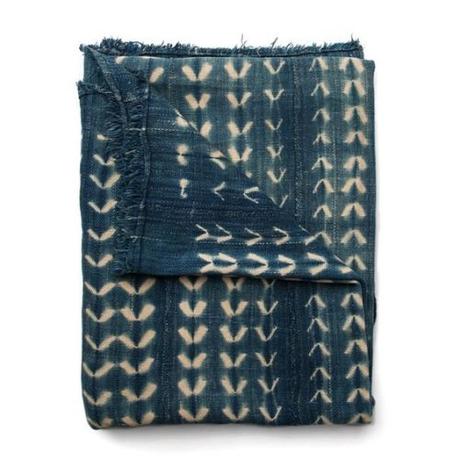
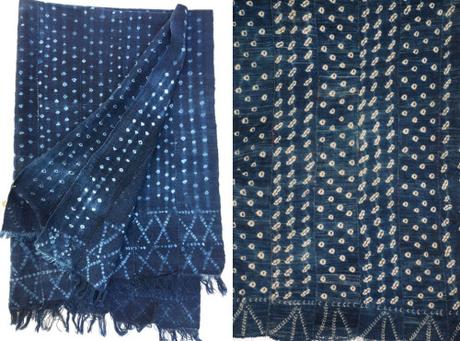
The best ones, I think, are made from what are known as “strip woven cloths" where strips of cotton are sewn together – selvedge to selvedge – in order to form something bigger. The effect is almost invisible when worn, but I like how the scarves feature a slightly textured bump running lengthwise down the fabric. It’s unclear whether strip weaving is an adaptation of a technique that crossed the Sahara or if it’s indigenous to West Africa, but by the 18th century, complex versions were being made in Kong (located in present-day Ivory Coast). The wealth afforded by the gold trade at this time enabled African kings and members of their courts to commission sumptuous and densely patterned strip-weaves, which were both worn and used for home decoration. The stuff you’ll find today is usually much simpler, but the fabrics look great and come with wonderful provenance. It’s a nice way to get something distinctive to the region.
It can be challenging to wear fabrics from other cultural traditions, but these work easily if you have the right wardrobe – whether that’s rugged workwear or something more bohemian. You can find them at local African fabric markets and boutiques, or online at sites such as eBay and Etsy (again, just pay close attention to the measurements). Imogene + Willie also occasionally carries them, although it looks like they only have a shawl right now. Lastly, Post Imperial makes African indigo-dyed scarves, often from finer cottons and silks. You can find those at Post Imperial’s site and No Man Walks Alone (the second of which is an advertiser here).
For those interested in African indigo-dyeing traditions, I wrote a post about the subject a couple of years ago. You can see it here. Also, for style inspiration, I’ve included some photos of the clothes I think can be worn with these scarves at the end of this post.
